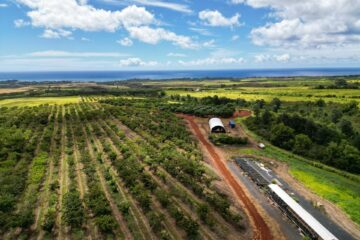Ladies and Gentlemen, start your tractors. Well, I mean that metaphorically. Back in February in a conversation with Will County Sheriff Mike Kelley, he stated how beneficial it would be for his department to have a police helicopter. Farming and police helicopters; do I have your interest?
It is now go-time for farmers to plant the 2023 crop. It is 6:00 pm on Wednesday April, 18 and a storm has just pounced on the majority of Will County. It started with some hail and then rains followed. My review of the radar shows the more populated areas north of my farm in Manhattan took a much bigger blow from this April thunderstorm.
There has been quite the change in philosophy for farmers when it comes to planting spring crops. When I was younger, it was preferred for most, if not all, farmers to plant corn and then proceed to soybeans. Since most farmers used the same equipment for both crops, it wasn’t uncommon for planting of soybeans to not even be started until mid or late May in some years if weather delayed corn planting. That sure has changed.
Today, some farm operations have enough workers and machinery to operate two, or more planters at once. In the last 10 years many farmers have been brave and planted soybeans in mid to late April. This practice is risky due to the risk of late frosts killing emerged soybeans. Many of those fields of soybeans in the last decade that were planted in April have been harvested with amazing yields compared to mid or late May soybeans.
I am determined to get some soybeans planted soon, in April, if Mother Nature will allow it. I plan to join the new trend of planting soybeans before corn or at the same time. I am hoping that the rains are light so I can plant a field soon to give it an early start. I hope this is not the year for a major frost around Mother’s Day. The growing point of a corn plant is below ground until it is 8-10 inches tall. A frost hitting corn may make the plants look pathetic, but they can usually grow out of it. For soybeans the growing point is the first part of the plant to emerge and any frost after emergence can lead to replanting.
We shall see how my plan proceeds. This rain will be beneficial for the oats and hay fields that I planted last week. Every year it is a delicate balance to receive enough rain to activate and incorporate herbicides and fertilizer applications and to keep soil moist enough for seeds to germinate but not receive deluges or constant rains that will cause erosion and delay/prevent equipment from planting the fields.
I have found several new challenges in my fields. Since it now seems about ½ of the rural population is raising chickens, I keep finding chicken feed bags that escaped the garbage pickup and have blown into my fields. On a more serious note, the popularity of the off-road vehicles commonly referred to as side-by-sides is showing the potential to be a problem. Some of the operators are showing no respect for private property, and I have witnessed several fields being turned into impromptu dirt tracks.
Time will tell if any soybeans get planted early this year, if they avoid frost and if the police must start impounding off-road vehicles. I will admit I am not sure how a patrol car would ever catch one with the speeds I have witnessed them going in the fields. Wait a minute, that sounds like a job for a helicopter; maybe the sheriff is onto something.



0 Comments